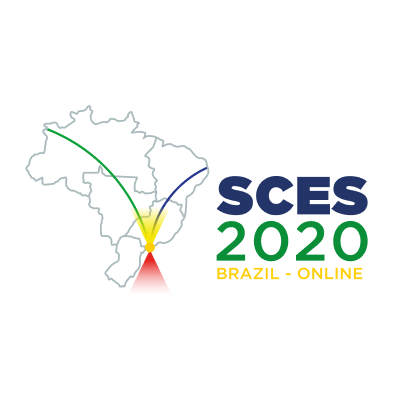International Conference on Strongly Correlated Electron Systems Proceedings
Magnetoelectric coupling in multidomain antiferromagnet Cu$3$TeO$6$
Como citar esse trabalho?
Para citar este trabalho use um dos padrões abaixo:
Como citar esse trabalho?
Multiferroic materials are a special class of solid-state compounds in which at least two types of orders simultaneously coexist. Among all, the magnetoelectric (ME) multiferroics in which the electric and magnetic order coexist are of particular importance in the fundamental research of interactions between electron charge and spin as well as lattice and orbital degrees of freedom. Moreover, some poorly understood complex excitations like electromagnons can exist in these materials [1,2].
The family of antiferromagnets with multidomain structure is of particular interest here because they represent an opportunity to examine the dynamics of domains and domain walls, their motion, creation, or destruction, as well to examine the role of ME effect. A member of mentioned family is copper tellurium oxide, Cu$_3$TeO$_6$ which has a cubic crystal structure with a three-dimensional magnetic lattice in which copper ions form hexagons with shared vertices [3,4]. The long-range antiferromagnetic arrangement, which occurs below T$_N$ = 61 K, is either collinear or has a small spin inclination. The high cubic symmetry of this material allows eight (4x2) antiferromagnetic domains. Considering the magnetic lattice, there are two possible explanations for the magnetoelectric response. A canted antiferromagnetic arrangement could yield toroidal domains each of which, with the application of a magnetic field, would have electric polarization in different directions. On the other hand, a collinear antiferromagnetic arrangement would break the symmetries of the inversion of both space and time which could explain the ME response [4].
In order to further investigate ME properties in Cu$_3$TeO$_6$, we performed static electric polarization and dynamic dielectric spectroscopy studies in an external magnetic field up to 5 T for few different directions of electric polarization and magnetic field. Electric polarization was carried in fields up to 4 kV/cm. Together with previously shown magnetic properties [4], our measurements suggest that Cu$_3$TeO$_6$ is electric and magnetic field-induced ferroelectric, but the allowed magnetic point group cannot explain that linear magnetoelectric effect. Therefore, additional experimental and theoretical studies are needed to further understand the origin of linear ME coupling and the role of quantum effects in this material.
- 1 Institute of Physics, Zagreb
Discussões Científicas de Qualidade
Com ~200 mil publicações revisadas por pesquisadores do mundo todo, o Galoá impulsiona cientistas na descoberta de pesquisas de ponta por meio de nossa plataforma indexada.
Confira nossos produtos e como podemos ajudá-lo a dar mais alcance para sua pesquisa:
Como citar esse proceedings?
Esse proceedings é identificado por um DOI , para usar em citações ou referências bibliográficas. Atenção: este não é um DOI para o jornal e, como tal, não pode ser usado em Lattes para identificar um trabalho específico.
Verifique o link "Como citar" na página do trabalho, para ver como citar corretamente o artigo

